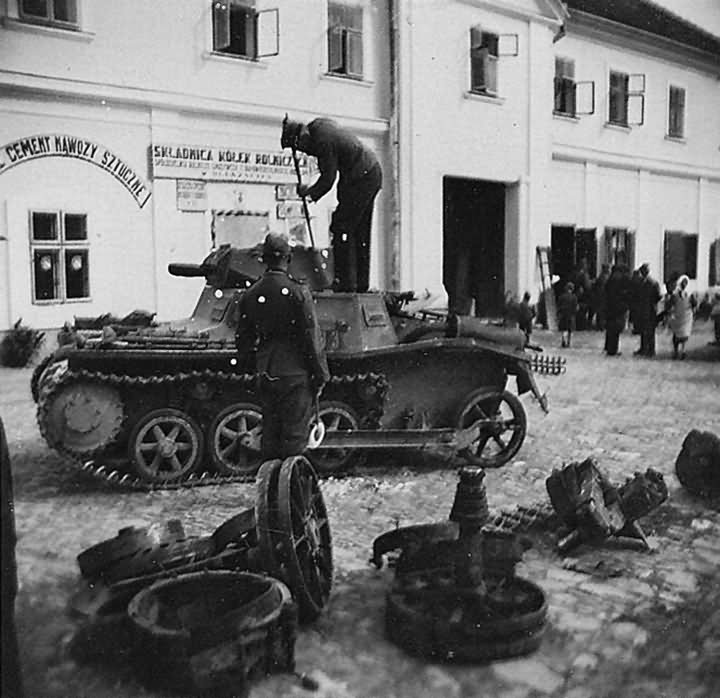Vulnerability of the Panzer I
Weaknesses Exposed in Poland (1939)
Armor Vulnerability: Despite the overall success of the German Blitzkrieg during the Invasion of Poland, the Panzer I tank’s vulnerability became starkly apparent. The tank’s light armor, with thicknesses ranging from 6mm to 13mm, proved inadequate against Polish 37mm anti-tank guns, which could easily penetrate the Panzer I’s armor.
Limited Firepower: The Panzer I was armed only with twin 7.92mm MG13 machine guns, which were largely ineffective against armored targets. As a result, Panzer I units needed support from heavier German tanks, like the Panzer III and Panzer IV, to effectively engage even the lightest Polish armored vehicles, such as tankettes.
Operational Challenges
Terrain Difficulties: The Panzer I, though a light tank, often struggled in challenging terrains. The campaign demonstrated its tendency to become bogged down in muddy conditions, which was particularly evident during the Polish counter-attack along the River Bzura. The tank’s limited power and weight distribution were not suited to the soft, uneven ground encountered in Poland.
Combat Losses: The vulnerability of the Panzer I is further underscored by the fact that 89 Panzer I tanks were lost during the campaign, out of a total German tank casualty count of 219 vehicles. This high loss rate indicates both the heavy reliance on the Panzer I in the early phase of the campaign and its susceptibility to enemy fire.
Urban Combat Vulnerabilities
- Warsaw: A significant number of Panzer I losses occurred during the intense fighting in the ruins of Warsaw. The tank’s thin armor and limited firepower made it particularly vulnerable in the confined urban environment, where Polish forces, employing anti-tank weapons and improvised defenses, could effectively target the lightly armored German vehicles. The Panzer I’s unsuitability for urban combat was evident as it struggled in the narrow streets and amid the rubble, where its weaknesses were fully exposed.
The Panzer I’s performance during the Invasion of Poland highlighted its critical vulnerabilities, particularly its inadequate armor and firepower. These weaknesses not only resulted in significant losses but also underscored the tank’s reliance on more heavily armed and armored support vehicles. The lessons learned from the Panzer I’s shortcomings in Poland would later influence the German military’s shift towards more robust tank designs as World War II progressed.
